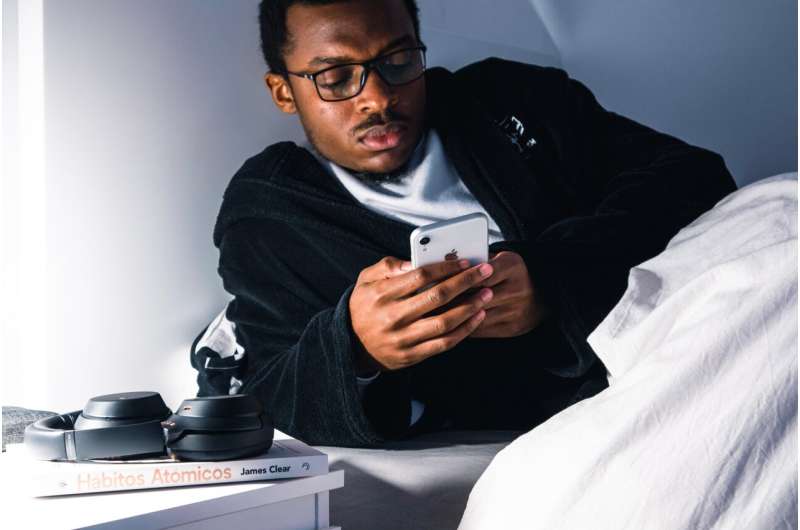Excessive smartphone screen time linked to earlier puberty onset

Exposure to blue light, via regular use of tablets and smartphones, may alter hormone levels and increase the risk of earlier puberty, according to data from a rat study presented today at the 60th Annual European Society for Paediatric Endocrinology Meeting.
Longer duration of blue light exposure was associated with earlier puberty onset in the female rats, which also showed reduced levels of melatonin, increased levels of some reproductive hormones and physical changes in their ovaries. Use of blue light-emitting mobile devices has previously been linked to disrupted sleeping patterns in children but these findings suggest there could be additional risks for childhood development and future fertility.
The escalating use of blue light-emitting devices, such as tablets and smartphones, has previously been implicated in reducing sleep quality in both children and adults. This is thought to be through disruption of our body clock as blue light inhibits the evening rise in levels of the hormone, melatonin, which prepares our bodies for rest and sleep. Melatonin levels are overall higher during pre-puberty than in puberty, which is believed to play a role in delaying the start of puberty. Puberty is a complex process that involves co-ordination of several body systems and hormones.
In recent years, several studies have reported increases in early puberty onset for girls, particularly during the COVID-19 pandemic. The link between blue light exposure and reduced melatonin levels suggests that increased screen time, such as during the pandemic restrictions, may be playing a role in this reported increase. However, it is very difficult to assess this in children.
In this study, Dr. Aylin Kilinç Uğurlu and colleagues in Ankara, Turkey, used a rat model to investigate the effects of blue light exposure on reproductive hormone levels and the time of puberty onset. Female rats were divided into three groups of six and exposed to either a normal light cycle, 6 hours or 12 hours of blue light. The first signs of puberty occurred significantly earlier in both groups exposed to blue light, and the longer the duration of exposure, the earlier the onset of puberty. Rats exposed to blue light also had reduced melatonin levels and elevated levels of specific reproductive hormones (estradiol and luteinizing hormone), as well as physical changes in their ovarian tissue, all consistent with puberty onset. At the 12-hour exposure, rats also showed some signs of cell damage and inflammation in their ovaries.
Dr. Aylin Kilinç Uğurlu comments, “We have found that blue light exposure, sufficient to alter melatonin levels, is also able to alter reproductive hormone levels and cause earlier puberty onset in our rat model. In addition, the longer the exposure, the earlier the onset.”
However, Dr. Uğurlu cautions, “As this is a rat study, we can’t be sure that these findings would be replicated in children but these data suggest that blue light exposure could be considered as a risk factor for earlier puberty onset.”
It is difficult to mimic blue light exposure equivalent to a child’s tablet use in rats but the timepoint of puberty in rats is roughly equivalent to that of humans, if adjusted for rats’ lower life expectancy. The hormonal and ovulation changes that occur during pre-puberty and puberty in female rats are also comparable to humans. So, despite the study limitations, these findings support further investigation of the potential health impacts of blue light exposure on hormone levels and puberty onset in children.
The team plans to investigate the cell damage and inflammatory effects detected after longer blue light exposure, since this could have long-term impacts on reproductive health and fertility. They will also assess whether the use of blue light minimizing “night light” mobile device features can reduce the effects observed in the rat model.
Source: Read Full Article
